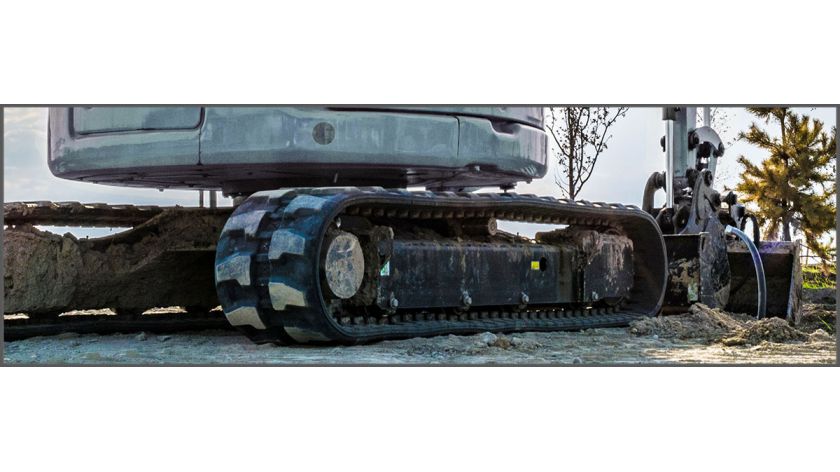
When it comes to extending the life of the tracks on your light construction equipment, such as mini excavators and compact track loaders, your operator has a lot of control over how long they will last. An operator who drives aggressively will wear out tracks quicker than one who drives cautiously. How the operator runs your machine can mean the difference between a useful life of 500 hours and 2,000 hours. In order to help extend the life of your tracks, here are some tips for operators.
- Backing up causes excessive wear on your tracks. Traveling in reverse, especially at high speeds, can place unnecessary stress on your tracks, which are designed for forward motion. If you must reverse, do so slowly. If you will be travelling more than a short distance in reverse, it is better to turn around and travel in a forward direction.
- Take it easy. Driving over uneven ground or making fast, sharp turns can speed up the wear process. Driving across a slope can cause damage to guide lugs, idlers and rollers. Instead, climb slopes straight up and down and turn the machine on level ground.
- Hydraulics are your friend. Use engine power and/or the lift/tilt hydraulics on the bucket to load it rather than spinning the machine. Unnecessary lateral movement will accelerate track wear or even cut the tracks.
- Match the job to your tracks. Working on rough, jagged terrain? You should probably be using steel tracks. Working on turf? Consider using tracks that won’t tear up the ground. You should also try to use the narrowest possible shoe for the job. Using the proper tracks for the site conditions will extend the life of your tracks.
- Match your tracks to the machine. In addition to width, pitch and links, you also need to consider the vehicle’s guiding system and horse power. A track that doesn’t properly fit your machine or isn’t designed to handle the horse power can slip, resulting in wear damage.
- Overloading your machine can also impact track wear, know the capacity of your machine and don’t exceed it.
- Limit ground travel. Rubber tracks wear with prolonged use. Don’t waste precious life hours on unnecessary ground travel. When transporting your equipment, try to deliver them close to the worksite so that the machine doesn’t have to travel further than absolutely necessary.
- Vary turning direction. Always turning on the same side can accelerate wear to both the tracks and the undercarriage.
- The ambient temperature you are working in as well as general working conditions can also affect track wear. When working in conditions colder than -13 degrees F or hotter than 131 degrees F, slow your travel speed and turn speed to reduce wear. More frequent maintenance checks should also be taken in order to ensure proper operation of the vehicle.
- Spin turns, pivot turns, counter rotations, and zero radius turns all place high stress on your tracks. Operators should use wider or three point turns where possible. If they do perform more dangerous turns, they should be taken at a slower speed in order to minimize harm.
- Finally, don’t try to deliberately destroy your tracks to test them. This can cause harm to the operator, the machine and void the warranty on your tracks.
Training and adherence to proper track maintenance will also pay a role in lifespan. Check out our article titled “Caring for Your Light Construction Equipment Tracks” for more tips on track care and maintenance. By having your operator follow these tips, you can help extend the useful life of your tracks. When it does come time to replace them, turn to TVH. We carry high-quality tracks that meet or exceed OEM specifications. With more than 600,000 parts for skid steers, compact track loaders and mini excavators with more to come, you can be assured you’ll always find what you need.